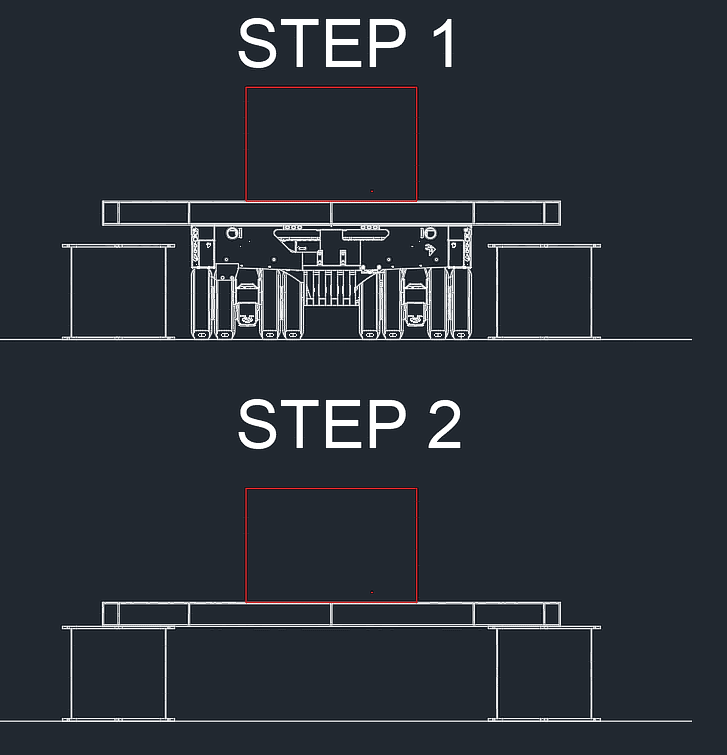Ok, if you want them to act side-by-side then I'm going to assume you're looking for 3x the beam strength rather than composite action (composite action would only really be applicable for sideways loading here anyway - you'd need to stack them for composite capacity)
The first nuance is: where is the loading applied?
If this is a heavy vehicle with a wide tire then you're probably loading all 3 beams relatively equally, so your connection is more for displacement compatibility than load sharing
However, if you're going to be directly loading the middle beam (say a narrow tire, or a hoist fixed to one beam only) then you'll need to detail your connections to transfer vertical load
Fully welded stiffeners is an easy way to do this but probably practically very difficult to do - I think you'll need to weld stiffeners to each member then bolt them at the overlaps (though even that is going to be very difficult - how do you get inside the beam cavity to bolt anything?)
You could lay transverse steel members/plates that have sufficient bending capacity and stiffness to transfer these vertical loads?
Or lay a longitudinal running deck of welded steel plate
Or use some sort of bolted cleat arrangement - I'd be considering tension tightened bolts though if vertical loads are high
The second nuance will be around the restraint conditions of the beams
Welding stiffeners between the 3 beams will help to prevent/mitigate some failure modes, though won't remove all of them
You still have the risk of all 3 beams buckling sideways in the same direction but I would expect that your cleats, if welded to the top and bottom flanges on the respective beams, would pretty much remove your local flange buckling and torsional failure modes



